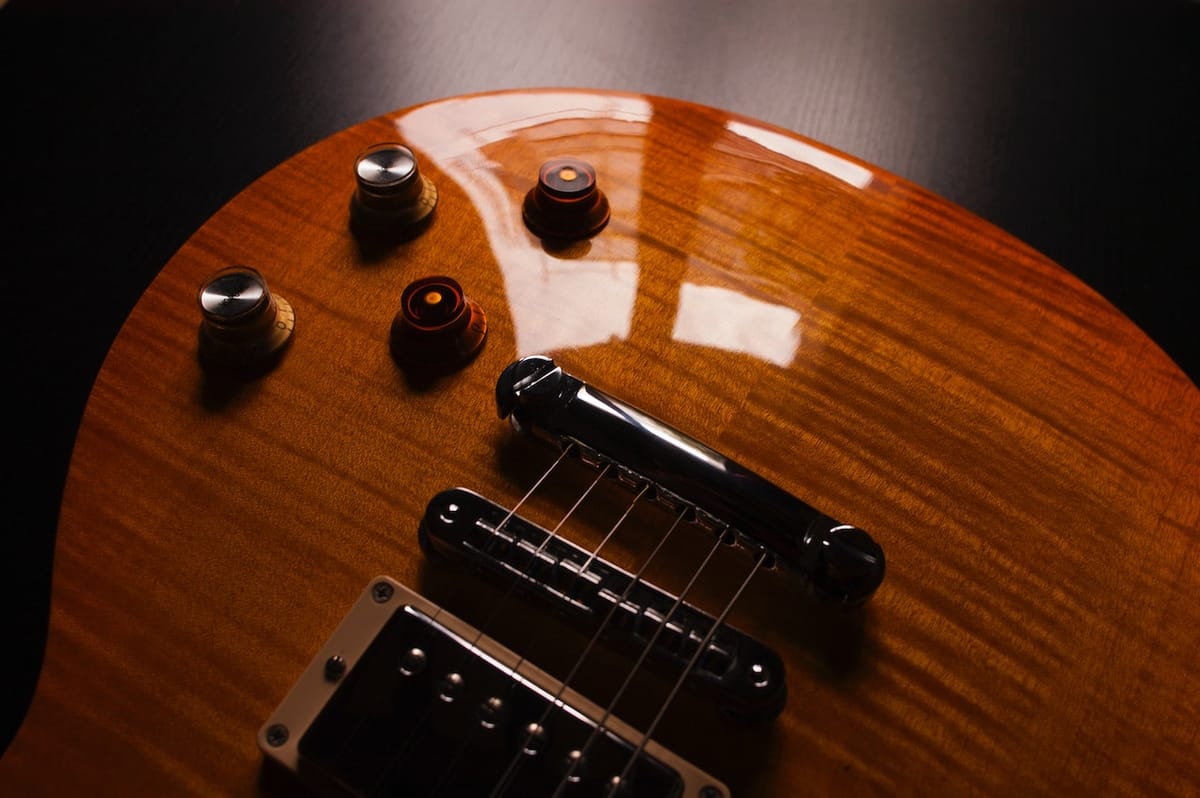Tips On How To Play G chord On Guitar Correctly

If you’re one of the beginner guitar players out there, the G major chord is one of the first chords beginner guitarists play. It’s easy to do, and you only need three fingers. A simple open chord shape may be used to play five of the seven notes in the key of G. As a result, knowing the G chord Guitar is a need. To begin, we’ll look at open chord forms and then at some more sophisticated barre chord alternatives to play the G chord on the Guitar. G7, G major 7, and G/B are some cool-sounding G alternatives we’ll examine at the conclusion.
The Open G Chord (G-Chord shape)
Let’s start with the mother of the G-chord Variations – the Open G chord. To do this, Put your Middle finger on the E-string and the third fret. Stretch your second finger onto the low E string, 3rd fret, then put your first finger onto the A string, fret two.
Alternatively, another way to play open G is with four fingers. This might seem harder, but your fingers only have to stretch a little more, and because your third and fourth fingers are close together, they can support each other.
G Major Barre Chord Alternative
The third fret plays the G major barre chord in the E shape. Use your first finger to barre. Finger 2 is on the fourth fret of the G string, the third finger is on the A string 5th fret, and finger 4 is on the fifth fret of the D string.
This shape is flexible; at first, you might find it easier to play on the higher frets. You won’t be able to play a G chord if you move it, but you can use it to learn the chord shapes.
The middle finger can also be used to bar from the D to the B string. At first, this is harder, but once you get the hang of it, it’s faster.
G Guitar Chord Variations
There are tasty alternatives to the full G major chord and the four-finger G we discussed above. These are called “G-chord Variations.” Technically, we’re still on the same chord. To begin with, Let’s start with G7.
G7
G7 chords are sometimes used in guitar songs with simple chords, usually in the key of C major (short for G seventh). This is hard for many guitarists to deal with because the G7 chord is hard to play on the Guitar, especially for beginners.
To play the G7 in the open position, put your ring finger on the third fret of the low E string. Then, put your 3rd finger on the A string’s second fret. Leaving strings 4, 3, and 2 open, put your index finger on the first fret of the high E string to finish the chord. From the low E string, pluck all six strings.
Here’s how it looks:
– First fret of the E string (first finger)
– 2nd fret of the A (Fifth string) with the middle finger
– Third fret on the low E (6th) string with the ring finger
G Major 7
Start by putting your middle finger on the third fret of the low E string. This is the Gmaj7 open position. Next, put your index finger on the second fret of the high E string. Leave the B, G, and D strings open and muffle the A string.
When your middle finger is on the low E, you can mute the A string by lightly touching it with your middle finger.
From the low E string, pluck all six strings.
Here’s how it looks:
2nd fret of the E (1st) string with the index finger.
Third fret of the low E (6th) string with the middle finger.
G/B Chord
The next monster is G/B, which is also called a first inversion. You can play this chord anywhere that a G major chord would work.
The mood changes coolly because the lowest note is not G, but you’ll have to decide if that’s right for your situation. Unlike many major chord shapes, it sounds great when played on a guitar with a lot of distortion.
If it’s too far, leave out the B string and use your fourth finger on the G string instead.
Bottom Line
So now that you know how to play the G chord and its Variations on Guitar, put it into practice! Start by playing the chord in different positions on the fretboard. Experiment with different strumming patterns and rhythms. Most importantly, have fun with it! Playing music should be enjoyable so don’t get too bogged down in technique. Remember, practice makes perfect! How did learning this new chord help improve your guitar playing?





